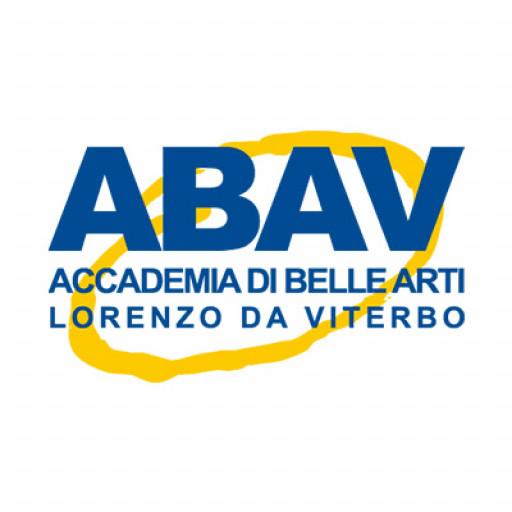The Bachelor of Photography at Griffith University offers students a comprehensive and immersive education in the art and science of visual storytelling. Designed for aspiring professional photographers and visual artists, this program combines technical skill development with creative exploration, enabling graduates to excel in diverse photographic fields such as commercial, fine art, documentary, fashion, and multimedia photography. Students will explore fundamental principles of photography, including lighting, composition, and digital post-production, while also engaging with contemporary issues and emerging trends in the visual arts. The program emphasizes practical experience through hands-on projects, industry placements, and collaborations with local and international clients, fostering a professional portfolio that reflects individual artistic vision and technical mastery. Throughout the course, students will have access to state-of-the-art studios, darkrooms, and digital laboratories, ensuring they are well-equipped to adapt to the rapidly evolving photography industry. Griffith University's strong industry connections and focus on industry-relevant skills prepare graduates for career opportunities in advertising, editorial, fashion, fine art, and commercial photography, as well as opportunities in media, film, and new media platforms. The curriculum also encourages innovation and experimentation, supporting students to develop a unique voice and approach to their work. Graduates of this program will be equipped not only with advanced photographic skills but also with critical thinking, professional ethics, and entrepreneurial capabilities to thrive in competitive markets. With a vibrant creative community and dedicated faculty of practicing professionals, the Bachelor of Photography at Griffith University is an ideal choice for individuals passionate about making a mark in the dynamic world of visual arts.
Griffith University grants credit and recognition of prior learning which may relate solely to prior formal education or previous casual and non-formal learning. To learn more, please see the following internet site:https://www.griffith.edu.au/apply/credit-transfer Credit transferGriffith's advanced Credit Precedent Database allows you to find out which credit conclusions are made in the past. These precedents will provide you with an idea of what you can expect.https://app.griffith.edu.au/credit-precedent/credit_result.php? Ngpc=1186&-SortField=Connected%20Institutionpercent 20Name&-noresultserror=error.html&-search View charge precedents for this particular program
The Bachelor of Photography at Griffith University requires students to complete a total of 24 units to graduate. Students must enroll in core courses that cover fundamental concepts such as photographic techniques, digital imaging, history of photography, and visual storytelling. These core units typically include Introduction to Photography, Digital Imaging Techniques, Photography Practice, and Visual Culture in Photography. In addition to core courses, students select elective units that may include specialized topics such as commercial photography, portraiture, landscape photography, and multimedia projects, allowing for the development of individual interests and professional skills. Practical hands-on workshops and studio sessions are integral components of the program, providing students with real-world experience and technical proficiency. The program emphasizes both technical skills and creative expression, encouraging students to develop a unique photographic voice. Assessments are conducted through a combination of practical assignments, project portfolios, presentations, and written reflections to ensure comprehensive understanding and application of photographic principles. Students are also expected to undertake a capstone project in their final year, which involves creating a substantial body of work demonstrated in a public exhibition or digital presentation. Throughout the program, students are encouraged to engage with contemporary photographic discourse and critically analyze visual culture. Collaboration and critique sessions form a key part of learning, fostering constructive feedback and professional growth. The curriculum is designed to prepare graduates for diverse careers in photography, including commercial, fine art, documentary, and editorial fields. Students also have access to industry-standard facilities and equipment to hone their technical skills. To be eligible for graduation, students must also complete any required work placement or industry engagement activities as specified in the program requirements. Overall, the program aims to produce innovative, skilled, and critically engaged photographers ready to contribute to the dynamic photography industry.
Funding options for the Photography program at Griffith University include a range of scholarships, government support, and payment plans designed to assist students financially throughout their studies. Griffith University offers several merit-based scholarships for both domestic and international students, which can significantly reduce the overall cost of education. These scholarships include the Griffith Remarkable Scholarship, which provides partial tuition fee waivers, and other faculty-specific awards that recognize academic excellence and potential in the field of visual arts and photography. International students may also be eligible for scholarships that support their relocation and living expenses, easing the financial burden.
In addition to scholarships, students can access government funding opportunities such as the Australian Government’s HECS-HELP and FEE-HELP schemes, which allow eligible students to defer the cost of their tuition fees. These schemes are particularly beneficial for domestic students, enabling them to pay back their study costs gradually after gaining employment. International students, on the other hand, typically pay tuition fees upfront or as per their visa requirements but may explore specific financial aid options or part-time work permitted under student visas.
Griffith University also offers flexible payment plans to help manage tuition fees and other associated costs, allowing students to spread payments over multiple installments during the semester. This approach can make financing a Photography degree more manageable without requiring full payment at the beginning of each term. Furthermore, students are encouraged to seek external funding sources such as private grants, sponsorships, and industry-specific scholarships provided by arts organizations and creative industries interested in supporting emerging photographers.
During the course, students may also explore opportunities for paid internships and industry placements, which can provide both income and valuable professional experience, enhancing employability after graduation. The University provides comprehensive financial advice and support services to help students navigate their options and identify the most suitable funding pathways according to their circumstances. Overall, the combination of internal scholarships, government assistance programs, flexible payment arrangements, and external funding sources creates a broad spectrum of financing opportunities for students enrolled in the Photography program at Griffith University, making quality education accessible and attainable for a diverse student body.
The Bachelor of Photography at Griffith University is a comprehensive undergraduate program designed to equip students with a broad range of technical, creative, and professional skills necessary for a successful career in photography. This program emphasizes both practical skills and theoretical knowledge, providing students with the opportunity to develop their artistic practice while understanding the evolving landscape of the photographic industry. Throughout the course, students engage in hands-on learning through studio work, field projects, and digital media production, ensuring they are proficient in contemporary photographic techniques and equipment. The curriculum covers various aspects of photography, including digital imaging, lighting, composition, and post-production editing, often using industry-standard software and tools. As part of their studies, students may explore different genres of photography such as commercial, fashion, documentary, fine art, and portraiture, enabling them to identify their specific interests and strengths. In addition, the program emphasizes professional practice, encouraging students to develop portfolios, business skills, and networking capabilities essential for freelancing or employment within the industry. Griffith University maintains strong connections with industry partners, offering students opportunities for internships, exhibitions, and real-world projects that enhance their employability. The program is delivered by experienced practitioners and academics committed to fostering innovative, ethical, and sustainable photographic practices. Graduates of the Bachelor of Photography are prepared for diverse careers within the creative industries, including commercial photography, editorial work, advertising, art galleries, and multimedia production. The program's structure often includes both coursework units and practical studio components, designed to challenge students creatively and technically. Suitable for individuals passionate about visual storytelling and image making, the program encourages exploration, experimentation, and the development of a unique artistic voice. Students benefit from access to state-of-the-art facilities, including fully equipped photography studios, darkrooms, and digital editing suites. Overall, this degree aims to produce versatile, highly skilled photographers capable of adapting to the changing demands of the industry and contributing innovatively to the field of visual arts.











